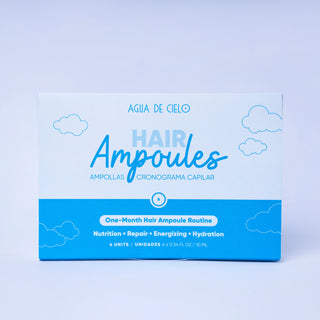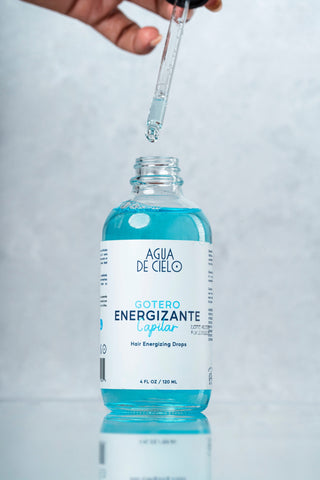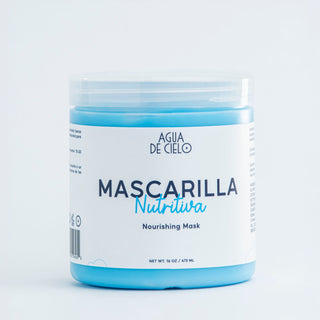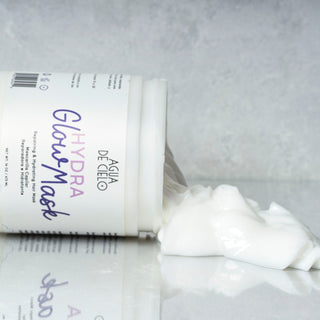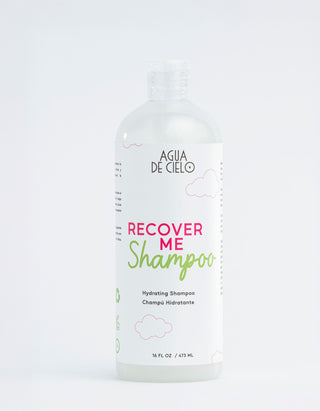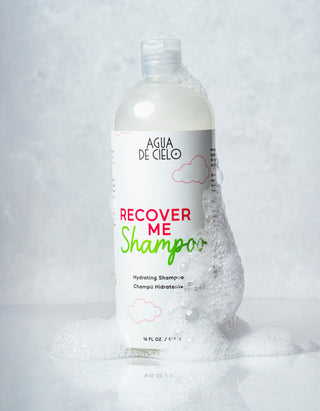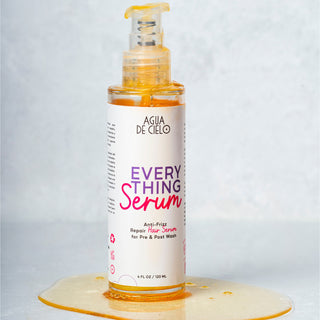Knowing your scalp type and how to care for it is often overlooked—although it's the first layer of healthy hair growth.
A healthy scalp means healthy hair.
An unhealthy scalp, well I think you get it.
If you don’t take care of the base where your hair grows, then you are risking growing future hair problems.
Luckily, in this blog, we’ll explore the hidden connection between your scalp and hair health so you can create a healthy environment for hair growth.
Table of Contents
Why is Knowing Your Scalp Type So Important?
Just like skin and hair, there are also different scalp types. Think of the scalp as the soil where plants grow. It helps every hair, from bottom to top. Filled with blood vessels, it feeds hair follicles with key nutrients. Sounds cool but what does this mean to you? Well, a nutrient-rich blood flow means shinier, stronger hair. So even if you use the best hair conditioner, if your scalp is not happy, your hair won't be as awesome as it can be.

A healthy scalp provides the necessary base for hair to grow. It provides proper blood circulation, which delivers important nutrients to the hair roots. Also, a healthy scalp produces a good amount of sebum. This oil keeps our hair smooth and safe. But if the scalp is not happy, that's when we have problems. It can result in dry, brittle hair, hair loss, slow hair growth, and dandruff or dermatitis.
Why Your Scalp Type Matters
Tailored skincare? Check. Tailored hair care? Double-check. Just as knowing your skin type can improve your complexion, knowing your scalp type can be a game-changer for hair health. It’s the first step to personalized hair care, but we put it last so we can end this series with a bang.
By tackling scalp issues and keeping a healthy scalp, you can create the best conditions for your hair to grow strong, shiny, and full. The key is to find out any scalp problems and adjust your hair care routine. Scalp folliculitis, scalp scabs & inflammation are just a few of the problems you’ll want to avoid to ensure you are giving your hair a healthy base to grow.
What are the different scalp types?
So now you know why a healthy scalp is important to hair health. Now it's time to learn about the different scalp types. There are three main scalp types: dry, oily, and normal. Each type brings its own challenges and needs special care to keep a healthy scalp and grow healthy hair.

- Dry Scalp: A dry scalp lacks moisture and usually feels tight and itchy. It's vulnerable to flakiness and can result in dull, brittle hair.
- Oily Scalp: An oily scalp produces excess sebum, making the hair look flat and greasy. This can lead to dandruff, clogged hair follicles, and hair loss.
- Normal (balanced) Scalp: A normal scalp strikes a perfect balance in sebum production. It's less affected by common problems like irritation, dandruff, or itchiness. This scalp type creates an ideal base for growing healthy hair.
How to know your scalp type
Knowing your scalp type is important in making an effective hair care routine for your needs. There are a few ways to find out yours.
The Tissue Test
- Wash your hair as you normally would. If you use conditioner, make sure to apply it to mid-lengths and avoid the scalp. Skip any leave-in products and let them dry naturally.
- The next day, dab a tissue onto your scalp, preferably at the crown and behind your ears. If the tissue has oil spots and you can see through it, you likely have an oily scalp. If it's dry, your scalp is, well, dry. If there's a small bit or no oil, congratulations, you might have a normal scalp!
Appearance and feel
Don’t have a tissue? Another way is just to feel or sense how your scalp is. Here are some key indicators to help you identify your scalp type:
- Dry Scalp: If your scalp feels tight, itchy, and sometimes flaky, you likely have a dry scalp. Your hair may look dull and feel dry.
- Oily Scalp: An oily scalp feels greasy with flat, limp hair. You may find the need to wash your hair frequently to combat the oiliness.
- Normal Scalp: A normal feels, well, normal. It’s not too dry and not too oily. It's the healthiest looking and feeling.
Once you have figured out your scalp type, you can tailor your hair care routine accordingly. When in doubt, ask your hairstylist or dermatologist to check it for you.
Now that you know your scalp type, it's time to break down each scalp type and how to properly care for them. By following these guidelines, you'll be on your way to keeping a healthy scalp.
How to Care For Your Scalp Type
Dry scalp: The Thirst is Real
Dry scalp, you know, that annoying feeling of dryness, itchiness, and flaking. It can be hereditary or caused by other reasons, including cold weather, hard water, over-shampooing, or harsh hair products. Also, with a dry scalp, your flakes may look dry or powdery.
Pro-tip: For a dry scalp, focus on hydrating and moisturizing. Use a sulfate-free shampoo that deep cleans and nourishes. Apply a hydrating hair mask once or twice a week to provide deep nourishment. Make sure to limit the use of heat styling tools and protect your hair from harsh weather conditions.
Look for dry scalp hair products that have ingredients like coconut oil, jojoba oil, or avocado oil. These will help hydrate and nourish the scalp, boosting healthier hair growth. Need fast hydration? Our Hair Ampoules Set contains ampoules for hydration, nourishment, and anti-hair loss.
Oily scalp: Shine at the Roots
Don't you hate it when you rub your fingers through your hair, your hand looks like you dipped it into a deep fryer? Then chances are you have an oily scalp. An oily scalp is usually caused by hormones, genetics, or your scalp producing too much sebum.
To manage an oily scalp, your scalp needs to maintain a balanced sebum production. So this means don't over wash because this strips the scalp of its natural oils.
Pro-tip: To handle an oily scalp, use a clarifying shampoo, which removes oil and build-up and doesn't dry out the scalp. You can try out Recover Me Shampoo for this. Also, choose lightweight, water-based hair products over heavy, oil-based ones. Wash your hair regularly to prevent the build-up of oil and dirt, but don't over-wash. Use a dry shampoo between washes to absorb extra oil and add volume.
Normal scalp: Just Right in the Middle
A normal scalp is the Goldilocks of scalp types: not too oily, not too dry, but just right. Congratulations! Your scalp is balanced, so it's easier to maintain than its oilier or drier rivals. But, it’s important to keep this balance to continue enjoying healthy hair.
Pro-tip: For a normal scalp, consistency is key. Use mild shampoos and conditioners made for normal hair. You should still avoid products with sulfates, salts, and other harsh chemicals. These can disrupt your scalp's natural balance. For an added boost, spoil yourself with a light scalp massage every few days. You can join it with our Hair Growth Dropper, which stimulates the scalp and hair follicles.
Remember to limit the use of styling products to ensure your scalp remains at its best. Also, protecting your hair from things like pollution or extreme weather is key. Even if you have a normal scalp.
Common Scalp Troubles & Treatment
Understanding common scalp problems and their effect on hair can help you fix and avoid them. Here we'll give you the background and kryptonite to the four most common.
Dandruff: Flakes and facts
Dandruff is the one that needs no introduction. Your black shirt's worst nightmare. It's a common scalp problem known for giving you flaky, itchy skin. It's caused by an overgrowth of yeast on the scalp, which leaves you shedding more skin cells than normal. Dandruff can make the scalp dry and irritated, leading to hair breakage, lack of shine, and leave you with that dreaded scalp itch.
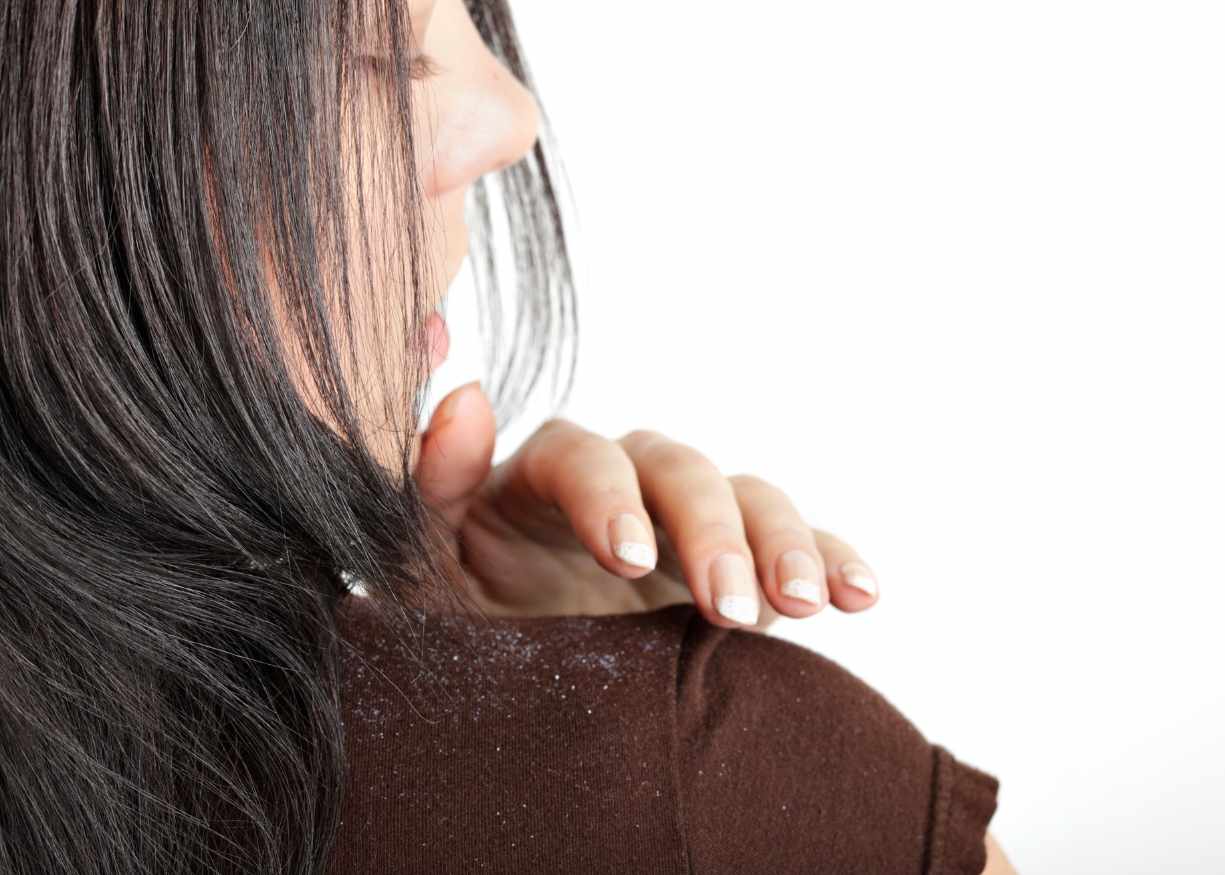
How to treat and avoid:
- Use anti-dandruff shampoos or hydrating hair products
- Make scalp massages a thing with oils like coconut or jojoba
- Bonus: Apply our organic hair growth serum two to three times a week on dry hair
Hair loss: Your sinks best friends
Hair loss can be one of the scariest problems you face. It's caused by genetics, hormonal imbalances, nutritional deficiencies, and scalp conditions. Conditions like traction alopecia can cause heavy hair loss if not treated. It's important to know the cause of your hair loss to promote hair regrowth and prevent more damage.
How to treat and avoid:
- Start a healthy hair care routine now if you haven't already
- Avoid tight hairstyles like ponytails or braids that pull on the hair
- Have a healthy diet rich in iron, vitamin D, biotin (natural), and protein to support hair health
- Apply regular scalp massages to stimulate blood flow
- Bonus: Try our Hair Growth Kit to kick start healthy hair growth and slow down loss
Please visit your dermatologist if you feel your hair loss getting worse.
Buildup: Your scalp’s extra layer
Product buildup happens when styling products, oils, and dirt build up on the scalp. This clogs hair follicles and affects hair growth. This can leave you with dull, lifeless hair and a red and itchy scalp.
How to treat and avoid:
- Regular scalp cleansing and exfoliating can remove buildup and boost hair growth
- Limit the use of heavy gels and styling products
- Wash your hair regularly
- Bonus: Add our organic hydrating shampoo and Hydra Glow organic hair mask to your hair care routine
Inflammation: When your scalp's on fire
Scalp inflammation is redness, heat, and pain on the scalp. It's often caused by conditions like scalp psoriasis or dermatitis. Outside of a tender scalp, it can cause hair thinning or loss (oh my!). Handling inflammation is important for keeping a healthy scalp and growing healthy hair.
How to treat and avoid:
- Use shampoos with gentle, organic ingredients
- Apply a cool compress or aloe vera gel to soothe the area
- Stay away from harsh chemicals in hair products and dyes
- Avoid tight hairstyles and headgear that can cause friction
If inflammation continues, visit a dermatologist
Seborrheic eczema of scalp: More than just dandruff
Seborrheic eczema is a condition that affects the scalp and causes red, oily scales. It can be caused by a variety of factors, including hormonal problems, yeast, and genetic factors. If you feel that your dandruff is persistent and leaves your scalp red and scaly, you may have seborrheic eczema.
How to treat and avoid:
- Visit a dermatologist for proper diagnosis and treatment
- Avoid shampoos with sulfates, as these can irritate the skin even more
- Bonus tip: Our Hair Growth Dropper which has rosemary and ginger which help alleviate dry scalp and irritation
- Bonus tip #2: Try our sulfate & salt-free shampoo and Hair Regenerating Mask to cleanse the scalp and help fight the dryness
Scalp Folliculitis: When bumps speak louder than words
Scalp folliculitis is when your hair follicles become inflamed. Leaving you with those small, red itchy bumps.
How to treat and avoid:
- Use shampoos with gentle, organic ingredients
- Apply a cool compress or aloe vera gel to soothe the area
- Stay away from harsh chemicals in hair products and dyes
- Avoid tight hairstyles and headgear that can cause friction
Scalp Scabs: That scalp crust
Scalp scabs are little crusty scabs on the scalp. Scratching or some scalp conditions could cause these.
How to treat and avoid:
- Don't pick at them, you'll just make them worse
- Use a gentle shampoo
- Consider adding a soothing aloe vera gel or oil, like coconut or jojoba, to moisturize the area
- Avoid harsh hair treatments and heat styling too often
- Products with coconut oil can hydrate and help heal scabs faster
- If you're scratching a lot, it might be time to see a dermatologist
Scalp Itch: Not just from a tough math problem
The urge to scratch your head, and no, not because you're confused. Scalp itch can be due to a range of reasons, from dryness to fungal infections.

How to treat and avoid:
- Use a moisturizing shampoo and conditioner.
- Cleanse your scalp and rinse hair thoroughly
- Avoid harsh chemicals in hair products that can dry out and irritate the scalp.
- Keep hair clean but avoid over-washing, which can strip the scalp of its natural oils
There you have it, some common scalp troubles decoded! Taking care of your scalp because it provides the base for your hair to grow.
Guide to a Healthy Scalp
Treatments for scalp and hair health
The best cure is prevention. Here are some treatments and exercises to add to your hair care routine:
- Scalp massage: A scalp massage improves blood flow, reduces stress, and boosts hair growth. The stimulation can help your scalp absorb nutrients better. It can also be a relaxing experience, especially after a long day.
- Scalp exfoliation: Scalp exfoliation can remove dead skin cells, oil, and buildup. It unclogs hair follicles, stimulates hair growth, and boosts scalp health.
- Hair masks: Hair masks provide deep nourishment and hydration to the scalp and hair. They usually have powerful ingredients to repair damage and promote healthier hair growth.
Lifestyle factors that affect scalp and hair health
Certain lifestyle factors can affect the health of your scalp and hair. Here are some to consider:
- Diet: A balanced diet with vitamins, minerals, and antioxidants is important. Include fruits, vegetables, lean proteins, and healthy fats in your diet.
- Stress: Chronic stress can lead to problems like dandruff, hair loss, and inflammation. Although easier said than done, it's important to try to track stress levels. Practice techniques like meditation, exercise, and yoga. Also, try getting enough sleep to maintain a healthy scalp and hair and keep your mood balanced.
- Hydration: It's important to drink enough water to maintain scalp and hair health. Drinking water helps flush out toxins and keeps the scalp moisturized. Check out our blog on the benefits of water here.
- Heat styling tools: Excessive use of heat styling tools can dry out your hair and cause damage. Make sure to use a heat protectant before styling your hair. When using them, use lower temperatures if possible
- Use of chemicals: Chemical treatments and harsh hair products can cause hair damage. Try to avoid these and switch to organic hair products instead.
Conclusion and Your Next Steps
Unlocking the hidden connection between scalp types and hair health is the key to getting the beautiful, healthy hair you deserve. By understanding your scalp type and following a personalized hair care routine, you can take care of the base of your hair growth.
So what's next?
Congratulations! You’ve done it! You've learned a bunch about how to care for your hair and scalp. Let’s take a pause to go over what you’ve learned in this three-part blog series:
- The different hair types, how to know yours, and how to care for it
- About hair porosity, why it’s important, and how to know yours
- Scalp types and why it’s important to know yours
That's awesome! But learning is just the beginning. Now, it's time to start your hair care journey and use what you’ve learned.
With what you've learned, partnered with our hair products, you're on your way to having beautiful hair you’ll be proud of.
If you enjoyed our three part blog series, here are some other articles you may like:
Are you ready to make your hair dreams come true now? Let's do it! Check out our products and start your journey now towards healthy hair.
Frequently Asked Questions
Why does my scalp itch a day after washing?
Itching a day after washing could be due to a reaction to hair products, dry scalp, or seborrheic dermatitis. It's essential to identify if any products are irritating or if your scalp needs more moisture.
Why does my scalp itch when I sweat?
Sweating can lead to scalp itching due to the accumulation of salt, oil, and sweat, which can irritate the skin. It's also possible that yeast-like fungi, which thrive in moist environments, contribute to the itching.
How do I get rid of the scabs on my scalp?
To get rid of scalp scabs, gently wash your hair with a mild shampoo, avoid picking at the scabs, and consider using over-the-counter treatments if they're due to a dermatological condition. Always speak with your health physician if the problem is severe.
Why do I have scabs on my scalp?
Scabs on the scalp can be due to various reasons, including psoriasis, seborrheic dermatitis, eczema, or physical injury like scratching. Identifying the underlying cause is crucial for proper treatment.
How do you detox your scalp to remove buildup?
Use a clarifying shampoo or a scalp scrub to deeply cleanse the scalp. Regular exfoliation and ensuring that hair care products are thoroughly rinsed out are also key steps in maintaining a healthy, buildup-free scalp.




